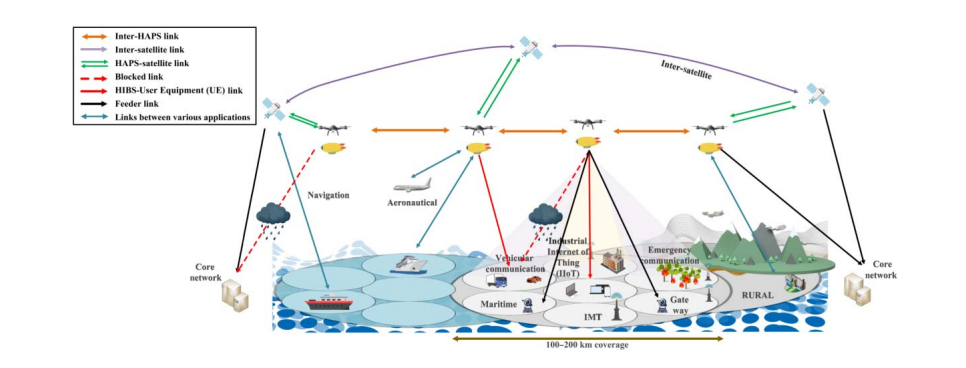The key engineering, legal and policy issues
HAPS
High Altitude Platform Systems (HAPS) are aeroplanes, airships and balloons which operate at an altitude of 20-50km above Earth and typically provide connectivity. They operate in the stratosphere above commercial aircraft and below satellites. HAPS are sometimes also referred to as High-Altitude Pseudo-Satellites.
The International Telecommunications Union (ITU) defines HAPS as a station on an object at an altitude of 20 to 50 km and at a specified, nominal, fixed point relative to the Earth acting as the carrier of HAP services (Radio Regulations Article 1.66A). HAPS that are used specifically to provide mobile broadband services are called HIBS or High Altitude IMT Base Stations.
Each HAPS is composed of an aerial vehicle and a payload. Typically they are aeroplanes, airships and balloons, however, there is a wide variety of HAPS with diverse vehicle performance characteristics. Various commercial companies are testing the technology but as of 2024, none have yet seen any major commercial deployment.

There is an interest in HAPS as a new layer which operates between terrestrial and satellite networks to deliver commercial communications services, particularly in under- and unserved areas. Proponents of the technology say they will support a range of connectivity solutions including emergency communications services and disaster recovery, environmental monitoring, broadband, mobile and IoT connectivity and backhaul transmission links between mobile and core networks.
The ITU explicitly recognises HAPS as an application and has progressively identified a range of spectrum bands for use by the technology in the fixed service (FS). In addition, the ITU has studied a range of bands and made recommendations for HAPS usage by national administrations. Although not harmonised, these bands include 5850-7075 MHz for gateway links and 27.5-28.35 GHz in the HAPS to ground direction.
